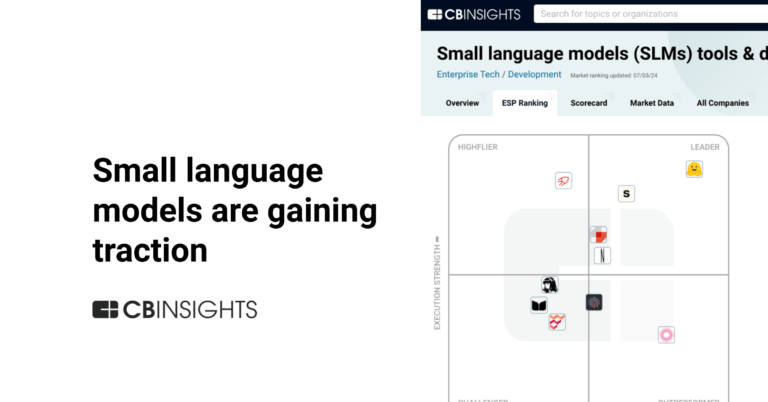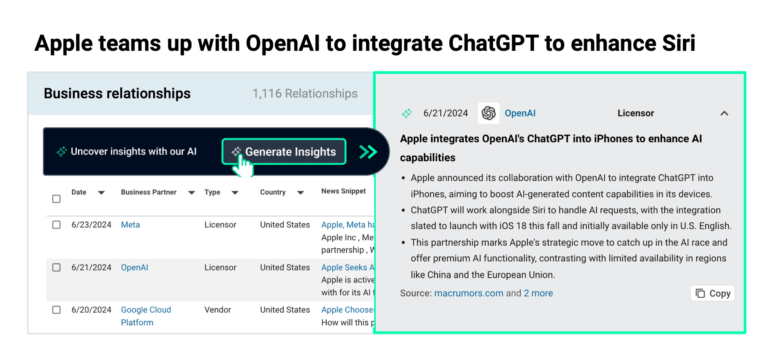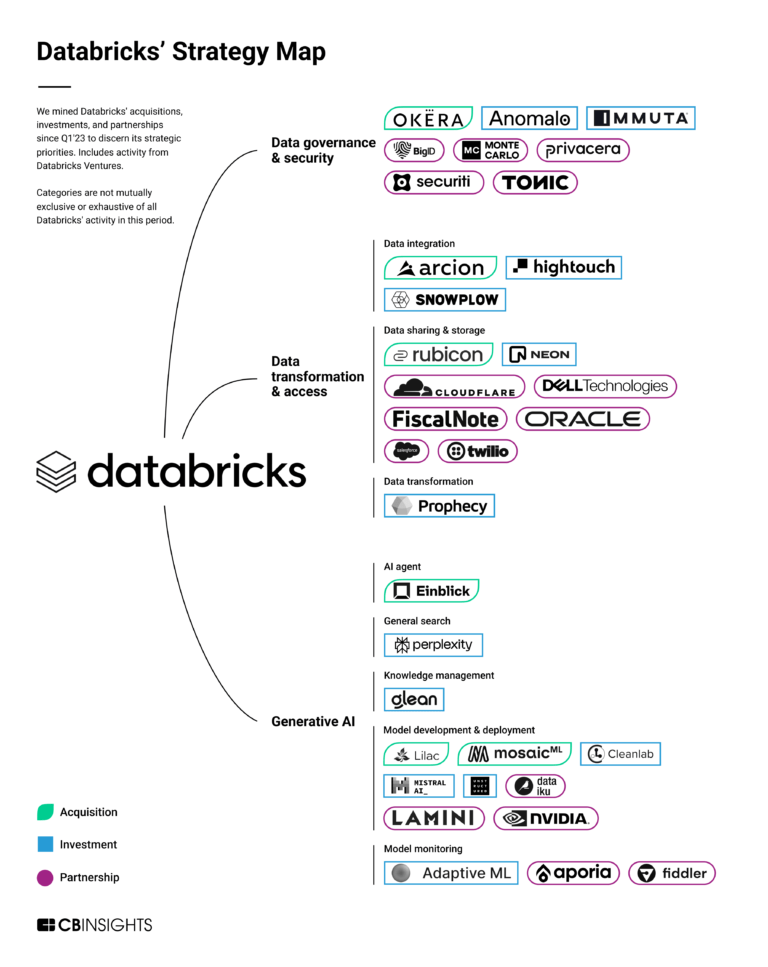
Mistral AI
Founded Year
2023Stage
Series B | AliveTotal Raised
$1.188BValuation
$0000Last Raised
$502.3M | 3 mos agoMosaic Score The Mosaic Score is an algorithm that measures the overall financial health and market potential of private companies.
+122 points in the past 30 days
About Mistral AI
Mistral AI focuses on the development of open-source artificial intelligence models in the technology sector. The company's main offerings include efficient, adaptable AI models that allow for full customization by users without requiring their data. Its models are primarily used in the tech industry. It was founded in 2023 and is based in Paris, France.
Loading...
ESPs containing Mistral AI
The ESP matrix leverages data and analyst insight to identify and rank leading companies in a given technology landscape.
The generative AI — large language model (LLM) developers market offers foundation models and APIs that enable enterprises to build natural language processing applications for a number of functions. These include content creation, summarization, classification, chat, sentiment analysis, and more. Enterprises can fine-tune and customize these large-scale language models — which are pre-trained on …
Mistral AI named as Outperformer among 15 other companies, including Google, IBM, and OpenAI.
Loading...
Research containing Mistral AI
Get data-driven expert analysis from the CB Insights Intelligence Unit.
CB Insights Intelligence Analysts have mentioned Mistral AI in 15 CB Insights research briefs, most recently on Aug 23, 2024.
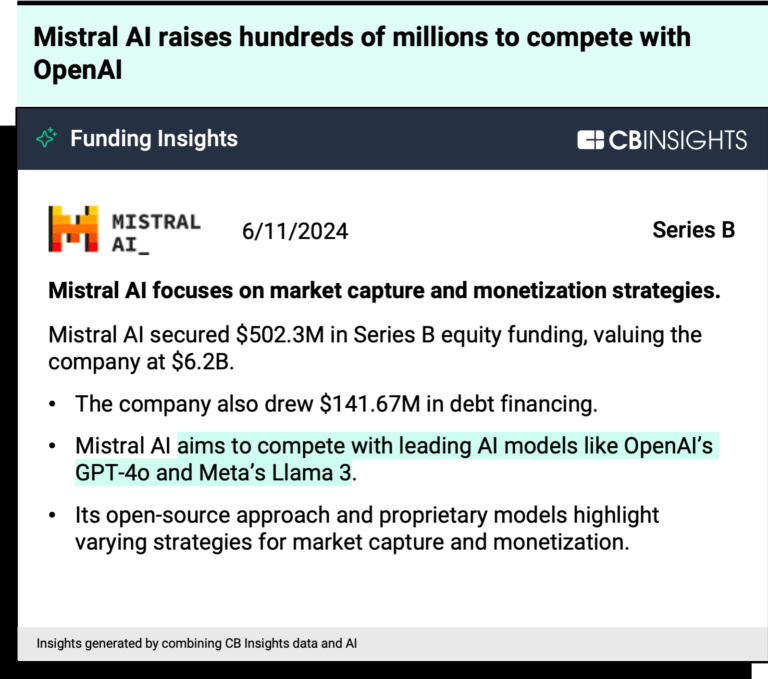
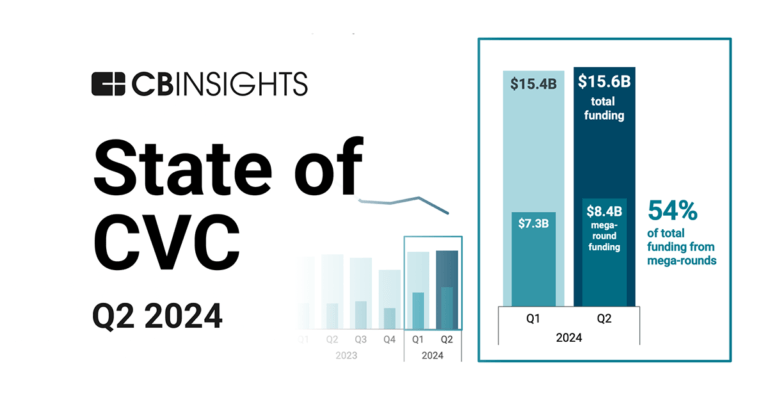
Jul 31, 2024 report
State of CVC Q2’24 Report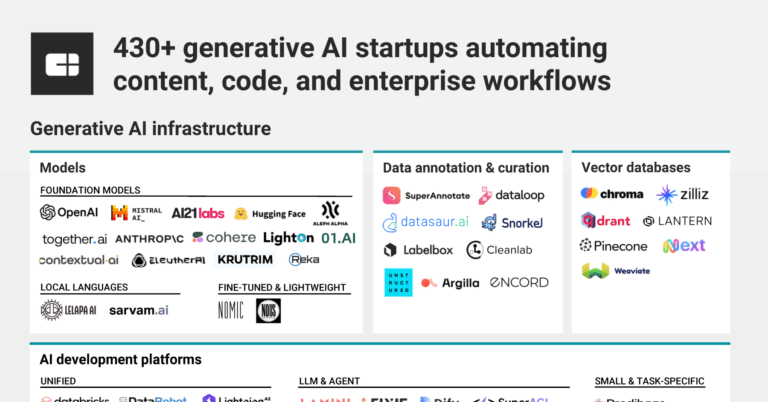
May 24, 2024
The generative AI market map
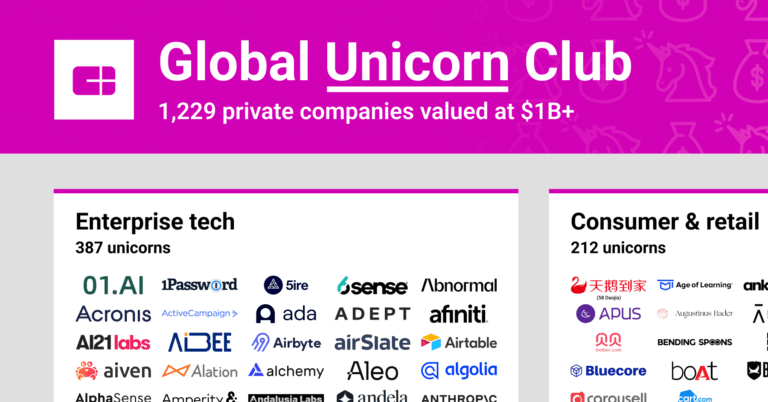
Mar 21, 2024 report
$1B+ Market Map: The world’s 1,229 unicorn companies in one infographicExpert Collections containing Mistral AI
Expert Collections are analyst-curated lists that highlight the companies you need to know in the most important technology spaces.
Mistral AI is included in 4 Expert Collections, including Artificial Intelligence.
Artificial Intelligence
14,767 items
Companies developing artificial intelligence solutions, including cross-industry applications, industry-specific products, and AI infrastructure solutions.
Generative AI
863 items
Companies working on generative AI applications and infrastructure.
Unicorns- Billion Dollar Startups
1,244 items
AI 100 (2024)
100 items
Latest Mistral AI News
Sep 21, 2024
Geeky Gadgets 2:53 pm Artificial Intelligence (AI) models are essential in various applications, and Ollama offers the ability to easily access a diverse range of AI models. Each model serves a unique function, catering to different needs and use cases. This guide provides more insights into the various AI models available for use with Ollama, detailing their specific functions, applications, and differences. Ollama AI Models TL;DR Key Takeaways : Source Models: General models trained on large datasets, essential for generating and understanding human-like text. Fine-Tuned Models: Specialized versions of general models, designed for specific tasks such as chat and instruct models. Code Models: Generate code based on provided syntax, aiding in writing, debugging, and optimizing code. Vision Models: Multimodal models that accept text and images, useful for image captioning and visual question answering. Other Potential Models: Future integrations could include speech-to-text and text-to-speech models, enhancing virtual assistants and accessibility tools. Embedding Models Embedding models create embedding vectors, numerical representations of data. These vectors are crucial for tasks like natural language processing and recommendation systems. Embedding models work with vector stores to store and retrieve these vectors efficiently. By converting words or phrases into vectors, embedding models enable machines to understand and process human language more effectively. The key benefits of embedding models include: Improved natural language understanding Enhanced performance in tasks like text classification and similarity analysis Exploring the Different Types of AI Models Available for Ollama Fine-Tuned Models Fine-tuned models are specialized versions of general models, designed to respond to specific inputs. These models include chat models and instruct models. Chat models assist free-form conversations, allowing for more natural and interactive dialogues. Instruct models follow specific instructions, often based on a single prompt. These models are fine-tuned to perform particular tasks, making them highly effective for targeted applications. Fine-tuned models offer several advantages: Improved performance on specific tasks More natural and engaging conversational experiences Ability to follow precise instructions for targeted outputs Code Models Code models generate code based on provided syntax. These models are similar to tools like GitHub Copilot and can be directed by comments to generate specific code. By understanding the context and requirements of the code, these models assist in writing, debugging, and optimizing code. Code models are invaluable for developers, as they streamline the coding process and enhance productivity. Key benefits of code models include: Accelerated code development Assistance in debugging and optimization Vision Models Vision models are multimodal models that accept both text and images as input. These models can describe aspects of provided images, making them useful for tasks like image captioning and visual question answering. Vision models have the potential to accept other modalities, such as video, in the future. By integrating multiple types of data, these models offer a more comprehensive understanding of the input, allowing more sophisticated AI applications. Vision models offer several advantages: Ability to process and understand visual information Enhanced performance on tasks that require both text and image understanding Potential for future expansion to other data modalities In addition to the models currently supported by Ollama, there are other potential models that could be integrated in the future. These include speech-to-text and text-to-speech models. Speech-to-text models convert spoken language into written text, while text-to-speech models do the reverse. These models have a wide range of applications, from virtual assistants to accessibility tools, and could further enhance the capabilities of Ollama’s AI offerings. Here is a selection of the AI models available also jump over to the official GitHub repository for more info: All-MiniLM: Embedding models trained on large sentence-level datasets. Aya 23: Multilingual model family supporting 23 languages, available in 8B and 35B sizes. BakLLaVA: Multimodal model combining Mistral 7B and LLaVA architecture. CodeGeeX4: Model for AI software development, available in 9B. CodeGemma: Lightweight models for coding tasks like code generation and instruction following. CodeLlama: Large language model for code generation, available in 7B, 13B, 34B, and 70B. Codestral: Mistral AI’s first code model for code generation, 22B. Command R: LLM optimized for conversational interaction, available in 35B. Command R+: Scalable LLM for real-world enterprise use, 104B. DeepSeek Coder: Open-source Mixture-of-Experts code model. DeepSeek Coder v2: Enhanced version of DeepSeek, excels in code-specific tasks. Dolphin-Llama 3: Dolphin model based on Llama 3, for instruction and coding. Dolphin-Mixtral: Fine-tuned models based on Mixtral for coding tasks. Dolphin-Mistral: Uncensored 7B model excelling at coding. Gemma: Lightweight models built by Google DeepMind, 2B and 7B. Gemma 2: High-performing model by Google, available in 2B, 9B, and 27B. LLaVA: Large multimodal model combining vision and language, 7B, 13B, and 34B. LLaVA-Llama 3: Fine-tuned LLaVA model from Llama 3 Instruct. Llama 2: Foundational language models from Meta, ranging from 7B to 70B. Llama 2 Uncensored: Uncensored version of Llama 2. Llama 3: Meta’s most capable openly available LLM, available in 8B and 70B. Llama 3.1: Meta’s state-of-the-art model, available in 8B, 70B, and 405B sizes. Mistral: 7B model by Mistral AI. Mistral-Nemo: State-of-the-art 12B model, built with NVIDIA. Mistral Small: Lightweight model for translation and summarization. Mixtral: Mixture of Experts models with open weights, 8x7B and 8x22B. Nomic-Embed-Text: High-performing open embedding model. Nemotron-mini: Small language model by NVIDIA optimized for roleplay and RAG QA. Nous Hermes: General-purpose models based on Llama and Llama 2, available in 7B and 13B. Nous Hermes 2: Powerful models excelling at scientific and coding tasks. Orca Mini: General-purpose model suitable for entry-level hardware. Phi: Microsoft’s 2.7B reasoning and language understanding model. Phi 3: Lightweight models by Microsoft, available in 3B and 14B. Phi 3.5: Lightweight AI model with 3.8 billion parameters. Qwen 1.5: Large models by Alibaba Cloud, spanning 0.5B to 110B. Qwen 2: New LLM series by Alibaba, available in 0.5B to 72B sizes. Qwen 2.5: Pretrained on Alibaba’s large-scale dataset, supporting up to 128K tokens. StarCoder: Code generation model, available in 1B to 15B sizes. StarCoder2: Next-gen code LLMs for code generation, 3B to 15B. TinyLlama: Compact 1.1B model trained on 3 trillion tokens. Vicuna: General-use chat model based on Llama and Llama 2. WizardCoder: State-of-the-art code generation model, available in 7B, 13B, 33B, and 34B. Zephyr: Fine-tuned Mistral models for assistant-like tasks, 7B and 8x22B. Ollama provides a variety of AI models, each tailored to specific functions and applications. From embedding models that create numerical representations of data to vision models that integrate text and images, these AI models offer powerful tools for a wide range of tasks. Understanding the differences and applications of these models can help you choose the right one for your needs, ensuring that you use the full potential of AI technology. For a full list of all currently supported AI models on Ollama jump over to the official website Models Library .
Mistral AI Frequently Asked Questions (FAQ)
When was Mistral AI founded?
Mistral AI was founded in 2023.
Where is Mistral AI's headquarters?
Mistral AI's headquarters is located at 15 rue des Halles, Paris.
What is Mistral AI's latest funding round?
Mistral AI's latest funding round is Series B.
How much did Mistral AI raise?
Mistral AI raised a total of $1.188B.
Who are the investors of Mistral AI?
Investors of Mistral AI include Lightspeed Venture Partners, Cisco Investments, Headline, Andreessen Horowitz, General Catalyst and 34 more.
Who are Mistral AI's competitors?
Competitors of Mistral AI include xAI and 2 more.
Loading...
Compare Mistral AI to Competitors

Anthropic is an AI safety and research company that specializes in developing advanced AI systems. The company's main offerings include AI research and products that prioritize safety, with a focus on creating conversational AI assistants for enterprise use. Anthropic primarily serves sectors that require reliable and interpretable AI technology. It was founded in 2021 and is based in San Francisco, California.
Klover offers Artificial General Decision Making™ (AGD™), and is revolutionizing decision-making by humanizing AI. Their proprietary modular library of AI systems slashes development time, enabling rapid prototyping and testing of tailored Ensembles of AI Systems with Multi-Agent Systems Core in Decision Making (EAIS-MASC'd). Klover's holistic approach to AGD™ spans quantum computing, data center and data architecture, software development, and AGD™ research. The company serves individuals and organizations. It was founded in 2023 and is based in San Francisco, California.

Inflection is an artificial intelligence(AI) studio focused on developing conversational artificial intelligence. The company offers a personal AI named Pi, designed to be supportive and empathetic, providing users with a new class of digital experiences. Inflection primarily serves individuals seeking personal AI interactions. It was founded in 2022 and is based in Palo Alto, California.

Aleph Alpha specializes in generative artificial intelligence (AI) technology for enterprises and governments within the artificial intelligence sector. The company offers language models and multimodal AI solutions for human expertise, compliance, and AI applications. Aleph Alpha's technology is tailored for various architectures and value chains. It was founded in 2019 and is based in Heidelberg, Germany.
01.AI provides open-source AI models and applications that support human productivity. Its offerings include open-source and proprietary language models capable of processing text in multiple languages, with a particular emphasis on English and Chinese. 01.AI primarily serves the technology and platform development sectors with a vision of integrating AI. The company was founded in 2023 and is based in Haidian, China.
Textify is a company focused on artificial intelligence and natural language processing in the technology sector. The company offers an AI membership platform that provides access to a wide range of AI tools, including predictive writing tools, text analysis and summarization tools, and AI-enabled text discovery tools. These tools are designed to simplify the process of building, distributing, and monetizing AI solutions. It was founded in 2021 and is based in Indore, India.
Loading...
